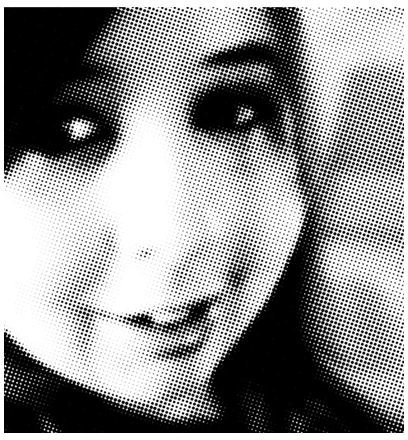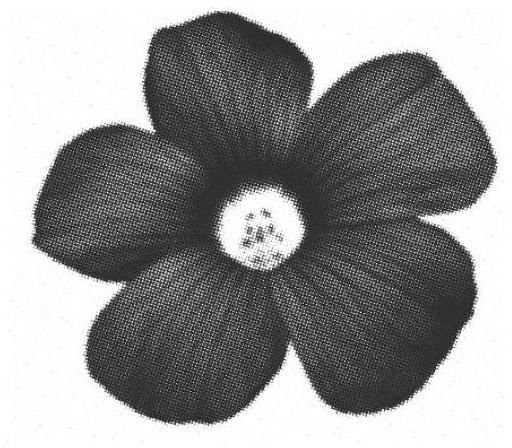What is Halftone? The History and Uses of Halftone
Halftone images are surprisingly simple in practice. Originally, they were designed to create images that only required one color of ink (usually black), but still needed to offer a good range of tones. For example, black and white photography consists of only one color of ink: true black. This means that when viewed under a microscope, there will only be two colors present in any black and white picture: black and white. The range of different grays we see is actually produced by varying the size of individual dots of ink, and these dots are aptly named halftone dots.
Halftone dots are small dots of ink – sometimes circular, elliptical, or even square – that are spaced evenly across areas of a black and white image. By changing the size of the dot, you change the saturation of ink, and therefore can lighten or darken the tones as needed. Smaller dots produce lighter grays and off-whites, while larger dots can lead to dark gray or black areas in an image.
Not only does this save on ink and reduce the number of expensive colors of ink, it’s actually interesting from an optical illusion standpoint. Because the human eye can only see tiny dots up close, halftone images from a distance appear to have a rich depth of tones from true white to true black, as well as many shades of gray in between. Like most things, the original halftone images were of lower quality, but thanks to advancements in technology, halftone images can provide a rich viewing experience. Printers today actually use the same concept when it comes to printing in colors. By using the CYMK color palette which consists of only four inks - cyan, yellow, magenta, and key (black) - printers can layer together different colors of dots to produce millions of colors and a rich, crisp image.
History
When answering the question “What is halftone,” it’s critical to know the history behind them. Halftone printing got its start, back in the late 19th century, when newspaper printers began to experiment with photographic screens in order to include photographs within their newspapers. It took a while for the process to become perfected, but now halftone images have become the standard for printing almost anything, let alone black and white images within the pages of a newspaper.
Digital halftoning started to take off, a century after halftoning became the normal printing method of printing images. Halftone printing used to be a very laborious task before the digital era, but once computerized printing came along, the process became quick and easy. New technology allowed printers to design all elements of the printed page be printed at once, rather than needing to design them separately. With advancements made in printing, the printing process became faster and more detailed, requiring less input from people. This also lead to higher DPI, which lead to richer, more true-to-life images that could be printed in magazines, newspapers, books, and other varieties of printed media.
Functional Use
Halftone printing can be tailored to fit the needs of the budget, design, or preference of the person printing. By using smaller, less densely spaced halftone dots, you can provide enough visual interest in an image without using a lot of inks which can be expensive, therefore cutting the cost dramatically. This is a common method used in newspaper, diagram and map printing. By increasing the DPI, or dots per inch, you can create rich and detailed images, which can be used for photographs and artwork displayed in newspapers, brochures, or on fliers.
In Design

Of course, halftone images provide more than just a utilitarian function. You might wonder what halftone is contributing to the creative world, and the answer could come as a surprise to you. While necessity might be the mother of invention, give a graphic designer enough time to fiddle with it, and they can make just about anything more about style and design than the original intent. Halftone images have become popular with retro-design, as well as becoming popular to create some strangely kitschy designs. For example, the image to the right (you may want to click it for a larger view), showcases a picture that has had the space between the halftone dots increased, giving it a very grainy feel. Another popular use of halftone images is made popular through newspaper comics and comic books. Halftone screens are applied to give the reader a sense of depth, light and dark, and, even strangely enough, color.
References
Image Credits:
Images are provided by the author.
Resources:
LIFE. “100 Photographs That Changed the World”. Time, Inc. August 25, 2003, p 18.
Meggs, Philip B. A History of Graphic Design. John Wiley & Sons, Inc. 1998.
